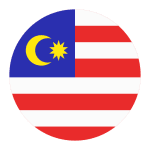

1. Introduction
1.1 Overview of Foreign Investment Zones (FIZ) in South Korea
Foreign Investment Zones (FIZs) in South Korea are designated areas established to attract and facilitate foreign direct investment. These zones offer numerous advantages, including fiscal incentives, advanced infrastructure, and strategic locations designed to create a conducive environment for international businesses.
1.2 Significance of FIZs in the Global Economy
FIZs are pivotal to the global economy, acting as catalysts for economic growth and development. They enhance international trade, foster innovation, and contribute to the diversification of the host country’s industrial base, making them critical in today’s interconnected economic landscape.
2. Historical Background
2.1 Evolution of Foreign Investment Policies in South Korea
South Korea’s foreign investment policies have evolved significantly since the 1960s. Initially restrictive, these policies have progressively liberalized, culminating in the establishment of FIZs aimed at attracting global enterprises and fostering economic growth.
2.2 Milestones in the Establishment of FIZs
The establishment of FIZs marked a significant milestone in South Korea’s economic development. The inception of the Incheon Free Economic Zone (IFEZ) in 2003 was a key development, followed by the creation of additional zones, each leveraging regional strengths and opportunities to attract foreign investments.
3. Key Features of Foreign Investment Zones
3.1 Strategic Location and Accessibility
FIZs in South Korea are strategically located to maximize accessibility to major international markets. Proximity to airports, seaports, and extensive transportation networks ensures seamless connectivity, making these zones ideal for global business operations.
3.2 Advanced Infrastructure and Facilities
These zones are equipped with state-of-the-art infrastructure, including high-tech industrial parks, modern office complexes, and robust logistics facilities, catering to the diverse needs of foreign investors and ensuring operational efficiency.
3.3 Regulatory and Tax Incentives
FIZs offer a range of regulatory and tax incentives such as reduced corporate taxes, exemptions from customs duties, and simplified administrative procedures. These incentives significantly enhance the attractiveness of these zones to foreign businesses.
3.4 Skilled Workforce Availability
South Korea’s FIZs boast a highly skilled and educated workforce, supported by world-class universities and training institutions. This ensures a steady supply of talent for various industries, making these zones highly competitive on a global scale.
3.5 Innovation and Technology Hubs
Many FIZs are designated as innovation hubs, promoting research and development activities. They host numerous technology parks and innovation centers, fostering collaboration between academia, industry, and government, thereby driving technological advancements.
4. Key Foreign Investment Zones in South Korea
4.1 Incheon Free Economic Zone (IFEZ)
The Incheon Free Economic Zone (IFEZ), which includes Songdo, Yeongjong, and Cheongna, is one of the country’s leading FIZs. Known for its advanced infrastructure and strategic location near Incheon International Airport, IFEZ is a hub for industries such as biotechnology, information technology, and logistics.
4.2 Busan-Jinhae Free Economic Zone (BJFEZ)
Located in the southeastern part of the country, BJFEZ capitalizes on its proximity to Busan Port, one of the busiest ports in the world. It offers significant benefits to logistics and manufacturing sectors, making it a strategic investment location.
4.3 Gwangyang Bay Area Free Economic Zone (GFEZ)
GFEZ focuses on heavy industries and manufacturing, benefiting from its proximity to Gwangyang Port and POSCO’s steel mills. This zone is a hub for industrial activities, providing excellent infrastructure and support for large-scale manufacturing operations.
4.4 Saemangeum-Gunsan Free Economic Zone (SGFEZ)
SGFEZ, situated on reclaimed land, is geared towards industries such as renewable energy, advanced materials, and agribusiness. Its vast land resources and innovative infrastructure make it an attractive destination for various industries.
4.5 Yellow Sea Free Economic Zone (YESFEZ)
YESFEZ aims to create a gateway for trade with China and other East Asian markets. It offers extensive logistical and industrial facilities to support a wide range of business activities, making it a key player in regional trade.
5. Benefits of Investing in FIZs
5.1 Financial Advantages
Investors in FIZs benefit from a host of financial advantages, including tax reductions, subsidies, and access to low-interest loans. These benefits enhance financial performance and competitiveness, making FIZs highly attractive to foreign businesses.
5.2 Enhanced Business Environment
FIZs provide a conducive business environment characterized by streamlined administrative processes, minimal bureaucratic hurdles, and robust legal frameworks. This environment ensures smooth business operations and protects investors’ rights.
5.3 Streamlined Administrative Processes
The zones are designed to facilitate ease of doing business, with one-stop service centers handling permits, licenses, and other administrative requirements efficiently. This streamlining significantly reduces the time and cost associated with bureaucratic processes.
5.4 Access to Domestic and International Markets
Foreign Investment Zones provide excellent access to both domestic and international markets. Their strategic locations and excellent transportation networks make them ideal for businesses looking to expand their global footprint and reach new markets.
6. Sector-Specific Opportunities
6.1 Technology and Innovation
FIZs are hotspots for technological innovation, attracting investments in sectors such as information technology, electronics, and renewable energy. These zones feature state-of-the-art facilities and support for research and development.
6.2 Manufacturing and Heavy Industries
With advanced infrastructure and strategic locations, FIZs support a wide range of manufacturing and heavy industrial activities, from automotive to steel production. They provide the necessary resources and facilities for large-scale industrial operations.
6.3 Healthcare and Biotechnology
South Korea’s FIZs are becoming increasingly attractive for healthcare and biotechnology firms. These zones offer cutting-edge research facilities, supportive regulatory environments, and a highly skilled workforce, making them ideal for these industries.
6.4 Logistics and Transportation
The strategic locations of FIZs make them ideal for logistics and transportation businesses. They provide efficient access to major shipping routes and international markets, ensuring seamless movement of goods and services.
7. Government Support and Incentives
7.1 Policy Framework
The South Korean government has established a robust policy framework to support FIZs, ensuring a stable and predictable business environment for foreign investors. This framework includes various policies aimed at enhancing the attractiveness of these zones.
7.2 Financial Grants and Subsidies
Investors can benefit from various financial grants and subsidies aimed at reducing the cost of operations and encouraging business expansion within FIZs. These financial incentives make it easier for businesses to establish and grow their operations.
7.3 Training and Development Programs
The government also supports workforce development through training and development programs. These programs ensure that businesses have access to a skilled and capable workforce, which is essential for maintaining competitiveness and driving innovation.
8. Case Studies of Successful Investments
8.1 Success Story: Samsung BioLogics in Songdo, IFEZ
Samsung BioLogics, a global leader in biopharmaceutical manufacturing, established its facilities in Songdo, part of the Incheon Free Economic Zone. The strategic location, coupled with robust infrastructure and supportive government policies, has enabled Samsung BioLogics to become a major player in the global biopharmaceutical industry.
8.2 Success Story: Renault Samsung Motors in BJFEZ
Renault Samsung Motors chose the Busan-Jinhae Free Economic Zone for its manufacturing plant, benefiting from the region’s excellent port facilities and transportation networks. This investment has not only boosted the local economy but also positioned Renault Samsung Motors as a key player in the automotive market.
8.3 Success Story: POSCO in GFEZ
POSCO, one of the world’s largest steel manufacturers, has significantly expanded its operations in the Gwangyang Bay Area Free Economic Zone. The proximity to raw material sources and efficient logistics infrastructure has enabled POSCO to enhance its production capabilities and maintain its competitive edge.
9. Challenges and Considerations
9.1 Regulatory Hurdles
Despite the numerous incentives, navigating the regulatory landscape can pose challenges for foreign investors. Understanding and complying with local laws and regulations requires careful planning and sometimes, local expertise.
9.2 Cultural and Language Barriers
Cultural differences and language barriers can affect business operations and negotiations. Companies need to invest in cultural training and consider hiring local talent to bridge these gaps effectively.
9.3 Market Competition
South Korea’s dynamic market environment means that competition is intense. Businesses must continuously innovate and adapt to maintain their market position and capitalize on new opportunities.
10. Future Prospects
10.1 Emerging Trends in Foreign Investments
The future of foreign investment in South Korea looks promising, with emerging trends such as digital transformation, green technology, and smart manufacturing driving new opportunities in FIZs. These trends are expected to attract significant foreign investments and boost economic growth.
10.2 Strategic Plans for FIZ Expansion
The South Korean government has outlined strategic plans to expand and enhance FIZs, focusing on sectors such as artificial intelligence, renewable energy, and biotechnology. These initiatives are expected to attract significant foreign investments and bolster economic growth, positioning South Korea as a global leader in innovation and technology.
FAQ: Foreign Investment Zones in South Korea
1. What are Foreign Investment Zones (FIZs) in South Korea?
Foreign Investment Zones (FIZs) in South Korea are designated areas established to attract and facilitate foreign direct investment by offering various incentives such as tax breaks, advanced infrastructure, and simplified administrative processes.
2. What are the key benefits of investing in a South Korean FIZ?
Key benefits include financial advantages (tax reductions, subsidies), an enhanced business environment (streamlined administrative processes, robust legal frameworks), access to a skilled workforce, and strategic locations with excellent connectivity to international markets.
3. What incentives are available for foreign investors in FIZs?
Incentives for foreign investors typically include reduced corporate taxes, exemptions from customs duties, financial grants, subsidies, and access to low-interest loans. These incentives are designed to reduce operational costs and enhance competitiveness.
4. Where are the major FIZs located in South Korea?
Major FIZs in South Korea include the Incheon Free Economic Zone (IFEZ), Busan-Jinhae Free Economic Zone (BJFEZ), Gwangyang Bay Area Free Economic Zone (GFEZ), Saemangeum-Gunsan Free Economic Zone (SGFEZ), and Yellow Sea Free Economic Zone (YESFEZ).
5. What industries are targeted by South Korean FIZs?
South Korean FIZs target a variety of industries, including technology and innovation, manufacturing and heavy industries, healthcare and biotechnology, logistics and transportation, and renewable energy.
6. How does the South Korean government assist foreign investors in FIZs?
The government supports foreign investors through a robust policy framework, financial grants and subsidies, training and development programs, and by ensuring a stable and predictable business environment.
7. What is the process for establishing a business in an FIZ?
The process involves selecting an appropriate FIZ, registering the business with relevant authorities, applying for necessary permits and licenses, and taking advantage of the one-stop service centers in the FIZs that streamline administrative processes.
8. Are there any notable success stories of foreign investments in South Korean FIZs?
Yes, notable success stories include Samsung BioLogics in Songdo, IFEZ; Renault Samsung Motors in BJFEZ; and POSCO in GFEZ. These companies have significantly benefited from the strategic advantages and incentives offered by the FIZs.
9. What are the common challenges faced by foreign investors in South Korea?
Common challenges include navigating regulatory hurdles, overcoming cultural and language barriers, and dealing with intense market competition. Companies often invest in cultural training and local expertise to mitigate these challenges.
10. What are the future prospects for FIZs in South Korea?
The future of FIZs in South Korea looks promising with emerging trends such as digital transformation, green technology, and smart manufacturing driving new opportunities. The government’s strategic plans for FIZ expansion also focus on sectors like artificial intelligence and biotechnology, which are expected to attract significant foreign investments.
11. How can investors learn more about specific FIZs and their opportunities?
Investors can learn more about specific FIZs by visiting their official websites, contacting the respective FIZ management authorities, and consulting with local business chambers and trade associations that provide detailed information and support for foreign businesses.
12. What is the role of local governments in supporting FIZs?
Local governments play a crucial role by providing infrastructure, facilitating permits and licenses, offering local incentives, and ensuring a supportive environment for foreign investors to thrive.
13. Can small and medium-sized enterprises (SMEs) benefit from FIZs?
Yes, SMEs can benefit significantly from FIZs through access to financial incentives, advanced infrastructure, and supportive government policies designed to encourage business growth and international expansion.
14. What makes the Incheon Free Economic Zone (IFEZ) notable?
IFEZ is known for its advanced infrastructure, strategic location near Incheon International Airport, and its focus on industries such as biotechnology, information technology, and logistics, making it a hub for innovation and international business.
15. How do FIZs contribute to South Korea's economic growth?
FIZs contribute to South Korea's economic growth by attracting foreign direct investment, creating jobs, fostering innovation, and enhancing the country’s global trade and industry networks. They play a vital role in diversifying the economy and increasing competitiveness on a global scale.
16. Are there any environmental considerations for businesses in FIZs?
Yes, businesses in FIZs are encouraged to adopt sustainable practices and comply with environmental regulations. The government promotes green technology and renewable energy initiatives within FIZs to ensure sustainable development.
17. What are the eligibility criteria for businesses to enter FIZs?
Eligibility criteria vary by FIZ, but generally include factors such as the nature of the business, investment amount, potential for job creation, and alignment with the strategic goals of the FIZ. Specific criteria can be obtained from the FIZ authorities.
18. How do FIZs facilitate research and development activities?
FIZs facilitate R&D activities by providing innovation hubs, technology parks, and collaboration opportunities with universities and research institutions. These facilities and networks support advanced research and the commercialization of new technologies.
19. Can foreign investors repatriate profits from their investments in FIZs?
Yes, foreign investors can repatriate profits from their investments in FIZs, subject to compliance with South Korea’s foreign exchange regulations. The government ensures that policies are in place to protect investors’ financial interests.
20. How do FIZs impact local communities and economies?
FIZs positively impact local communities and economies by creating jobs, boosting local businesses, enhancing infrastructure, and contributing to regional development. They also foster cultural exchange and international collaboration.

















